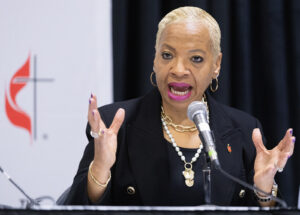
While we continue to see reports of denominational decline in America, we see fewer reports of the growth of non-denominational churches. It is actually an amazing story.
Two denominations that receive a lot of attention are the Southern Baptist Convention and the United Methodist Church. These two denominations have historically been the two largest Protestant denominations in the United States. The UMC has been in a steady decline for years, but that decline has been exacerbated by the departure of thousands of congregations in the past three years. The denomination’s membership decline will likely be 40 percent from its peak after the full effect of the disaffiliation movement transpires. UMC attendance in the United States has fallen from around 3 million to about 2 million. The numbers again will likely be much worse after the full disaffiliation effect takes place.
The Southern Baptist Convention’s peak membership was 16.2 million in 2006. In 2022, it was 13.2 million. Even more telling are the attendance numbers. The SBC’s peak weekly attendance was 6.2 million in 2009. By 2022, weekly attendance declined to 3.8 million. That decline in attendance is almost 40% in 13 years! (By the way, if you want to get great quantitative research on churches, subscribe to Ryan Burge at Graphs about Religion).
Non-Denominational Growth
According to Burge, 13 percent of total American adults now identify as non-denominational. That is more than all mainline denominations combined. It is also more than the two largest Protestant denominations (the SBC and the UMC) combined.
Burge notes that the “nons” is the second biggest story in American Christianity (The rise of the “nones” is the biggest story. ). While he reports the information from a statistical viewpoint, we at Church Answers are attempting to answer the “why” question. Why are non-denominational churches growing while most all denominations are declining? We see five possible answers to this question.
Five Reasons
We must be careful with our attempts to explain the growth of the non-denominational movement. First, our information is anecdotal rather than data based. Though our team at Church Answers interacts with thousands of church leaders and church members, we have not conducted a rigorous statistical study on this group.
Second, non-denominational churches are far from monolithic. They vary in worship style, doctrine, polity, and many other points. Those variables make analysis even more difficult. Nevertheless, we offer five reasons from our observations.
1. Non-denominational churches tend to be more evangelistic. For a number of possible reasons, these congregations are more intentional about reaching their communities with the gospel. We often see stark contrasts in the priority of evangelism between non-denominational churches and denominational churches.
2. Non-denominational churches typically invest more financially in reaching their communities. Though I could have combined the first two reasons, it is worth noting that the budget of a non-denominational church will often include a higher percentage of their funds used for local evangelism. Denominational church budgets usually allocate more funds for national denominational causes.
3. Non-denominational churches usually do not engage in issues of conflict to the level that denominational churches do. A church has only a finite amount of resources of time, money, and energy. The more that is expended on divisive issues, the less that can be expended on local outreach. We understand that many of these issues are gospel-centric and must be discussed and debated. Sadly, though, the resources spent on these issues often come at the expense of those priorities with a Great Commission focus.
4. Non-denominational churches do not carry the “name” baggage that a denominational church might carry. I think this issue can be overstated. A church with “Baptist” or “Methodist” or “Presbyterian” in its name can still be effective and can still grow. It is hard to know how many unchurched people decide not to visit a denominational church because of its name. Admittedly, though, if it’s a small percentage of the unchurched who make such a decision, that small percentage can have a big negative impact.
5. Non-denominational churches tend to be newer churches that grow faster than older churches. I hope our team can pursue a statistically valid study of the age of churches in America. I think it will confirm our anecdotal observations. The rapid growth of the non-denominational movement is a relatively recent phenomenon. That means many of the non-denominational churches are newer. These newer churches tend to focus more on local growth and evangelism.
We will continue to explore the fascinating topic on the “nons,” including the research of Burge. But I would love to hear your thoughts on the subject. Let me hear from you.
This article originally appeared at churchanswers.com.
















